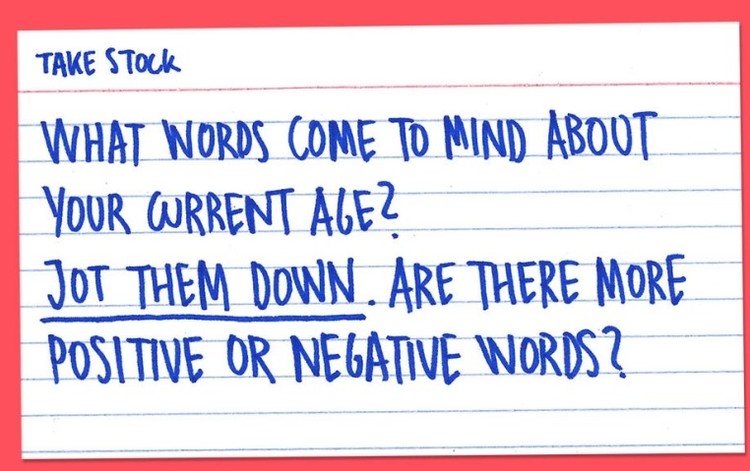AARP’s #DisruptAging site has some commendable goals: to “hold a mirror up to the ageist beliefs around us,” and “change the stories we tell ourselves about aging.” In other words, as they put it, to “disrupt aging”—which also just happens to be the title of AARP CEO Jo Ann Jenkins’ new book. The site has featured me as an “age disruptor,” which I appreciate. It’s produced a few videos, the most recent of which has gotten a lot of traction.
Called “Millennials Show Us What ‘Old’ Looks Like,” the video asks a sampling of millennials their ages (19-33), what age they consider to be old (40s-50s), and how an old person would cross the street or do a push-up or a jumping jack (haltingly). Then each is introduced to an older person (55-75) and the pair is instructed to “teach each other something you’re good at.”
Bringing people from different generations face-to-face is a great idea. It instantly dismantles stereotypes and creates a human connection. “Watch what happens when folks let go of their outdated beliefs and embrace the idea that aging is not about decline—it’s about growth,” the caption chirps. The pairs dance. They do yoga. They box. They smile and hug. The youngers now define “old” as 80 or 90, or 100.
What’s the problem? Every exchange involves athletic ability. What about olders who can’t kickbox or tango? What about those of us who excel at bridge or typing (ahem)? What about the irrefutable fact that aging involves physical decline? The olders in the video made the cut because they can move like younger people. It’s in synch with the website’s problematic promise to deliver “lively conversation about age-defying people” but it is a narrow and punishing metric because it suggests that the way to have value in old age is to “act young.” The video is steeped in age denial, as are the comments of the older participants, who say things like “age doesn’t matter” and “When people start stopping, that’s when they start getting old.” That might be when they start getting sick, and I hope the guy who says it is able to stay active, but he’s no younger than any other 75-year-old.
Another problem with the video? Instead of fundamentally challenging ageist stereotypes, it simply postpones them. Frailty and immobility lie ahead, just farther down the road. This scenario idealizes the “young old,” the market AARP has always aimed at, and does a grave disservice to all the 80-, 90- and 100-year-olds who continue to get around, contribute to their communities and show younger people a thing or two.
Another video on the site, “No Donuts for You!,” is brilliant. “Every day age discrimination happens behind closed doors. We wanted to see what it would look like if we brought it out into the open,” says the caption. They set up a food truck where an impressively straight-faced actress disguised as an employee—she deserves an Oscar—refuses to serve anyone over 40. It’s a provocative, hilarious and bitingly effective social experiment, and I hope AARP thinks up more of them.



